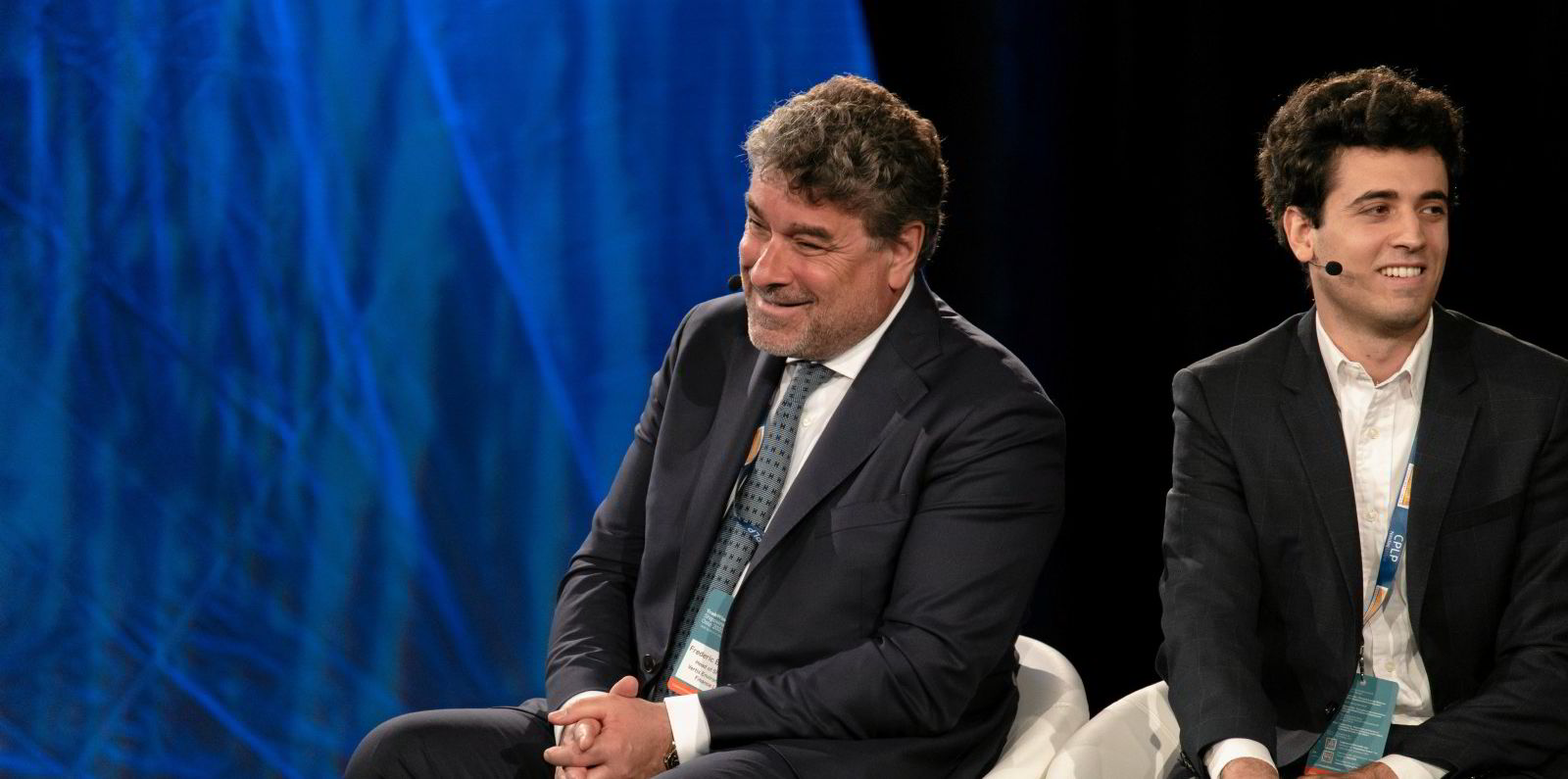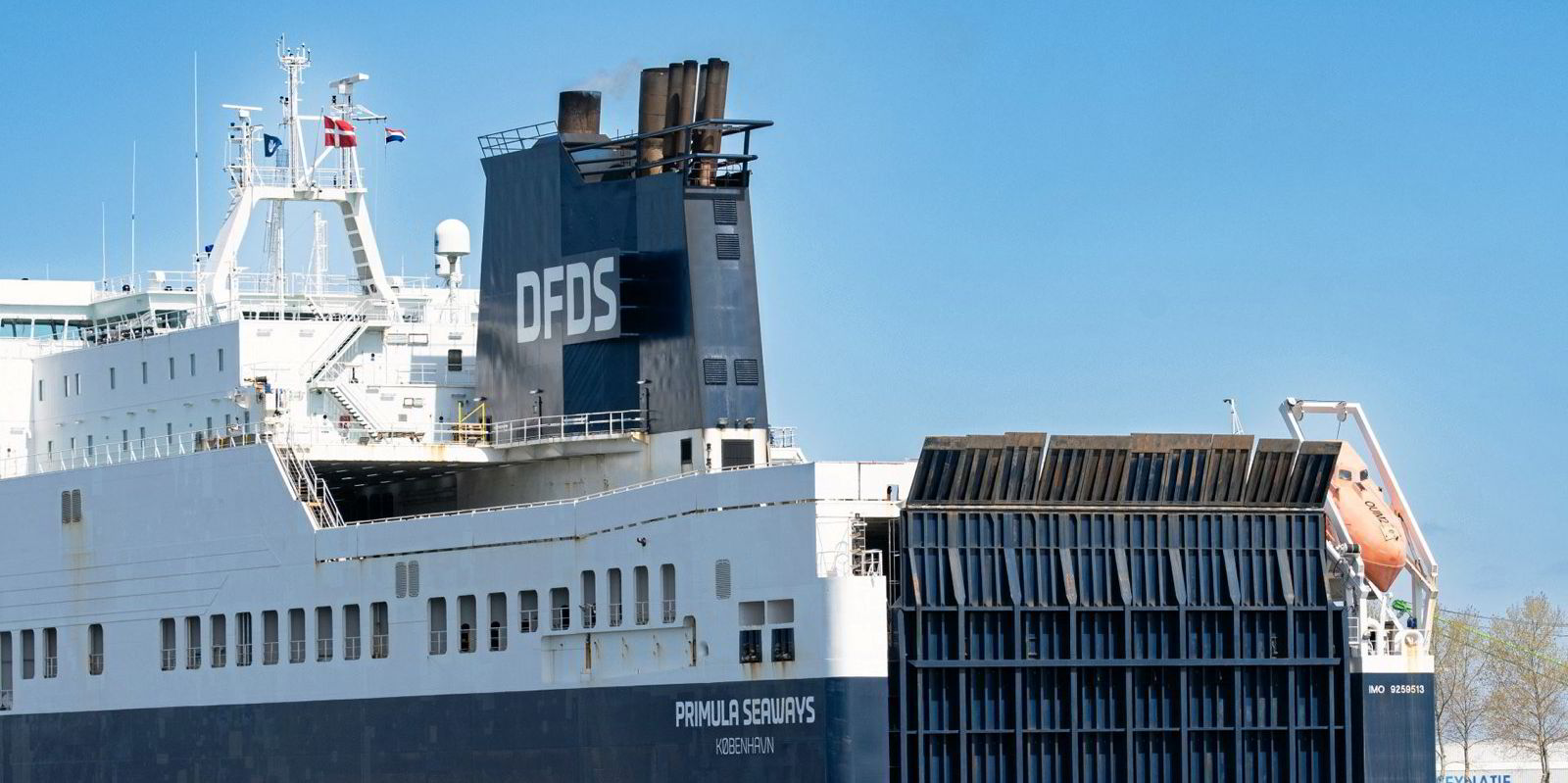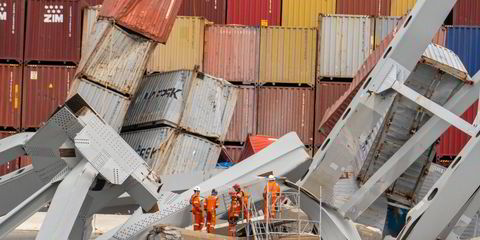Prices for European Union carbon credits are widely expected to rise in the years ahead, but what must go up may first come down in a volatile market.
Shipping companies have already started buying the credits known as EU allowances, or investing in futures, as they gear up for inclusion in the Emissions Trading System on 1 January.
But a variety of factors, including the European power sector’s pullback from coal imports, could impact demand for carbon credits in the months ahead.
Among the highest profile bears betting that EU allowances will come down is Per Lekander, the hedge fund manager who runs UK Clean Energy Transition and who told the Financial Times that he has a short position that carbon prices will “collapse” as emissions dip in Europe. They currently stand at just over €91 ($100), and he said he will close out his short if they reached €60.
Mattia Ferracchiato, the Geneva-based head of carbon markets at BRS Shipbrokers, said in an interview for TradeWinds’ Green Seas podcast that Lekander is partially right.
“He’s partially right, because I do believe that we are going to have a very short window in the next few months, maybe up until the first half of 2024, where prices might be around this level or maybe a little bit below,” he said.
“I don’t believe the market is going to collapse.”
He pointed to factors on both the supply and demand side.

Ferracchiato said that Brussels is planning to add 78m tonnes of carbon credits to the ETS market next year to accommodate shipping, but shipping will only need 33m tonnes because legislation is being phased in, so ship operators will only have to buy 40% of the required credits next year.
Plus there is front-loading of auctions of allowances for future years.
Also on the demand side, the return of natural gas prices to normal means European electricity production is pulling back from coal, which requires more carbon credits. And the EU is more ready for winter this year, with gas storage at 84%.
He said prices could stay within €75 and €90 per tonne for the time being. BRS data shows prices peaked at €101 in August of last year.
After starting to increase next year, EU allowance prices could really pick up steam in 2025 and 2026, when a number of new upside factors come into play.
There will be fewer free allowances to some industries, with aviation losing its free pass in 2026. And shipping will be fully implemented into the ETS that year, as will the so-called Carbon Border Adjustment Mechanism, a tariff that requires importers to pay for the remissions they bring into the EU. Ferracchiato expects prices to average above €100 per tonne.
The crystal ball is blurrier after that. On the one hand, the EU will begin discussions in the next few years for the next phase of the ETS, with a view towards implementing the changes at the end of the decade.
“At the same time, after 2030 we expect a bigger amount of greener fuels in our grid, which will reduce the demand for carbon [allowances] from larger industries,” Ferracchiato said.
Despite volatility, the ETS is designed for prices to move higher, and the trajectory has been on an upward track over the long term.
Frederic Bouthillier, head of shipping at Vertis Environmental Finance, said companies should be watching the factors that move EU carbon credit prices up and down as a way to optimise their entry point in the market.
“We believe everybody now understands that, structurally, the market is looking more bullish than bearish,” he said in an interview for the podcast.
“But the bottom line is that there is a lot of volatility, and volatility means opportunities.”

He said some shipping companies, like ferry operators that are selling tickets for voyages in 2024, are already buying up allowances because they can pass the carbon costs onto customers.
But the trick is not to purchase allowances that generate financial exposure.
Bouthillier said it is still best to start preparing now, because it will take time to set up registry accounts in which to store allowances. And he said shipowners should not think that, just because the EU’s ETS law puts the onus on commercial operators to pay for the allowances, they do not have to buy carbon credits in some instances.
“The sooner the better,” he said.






